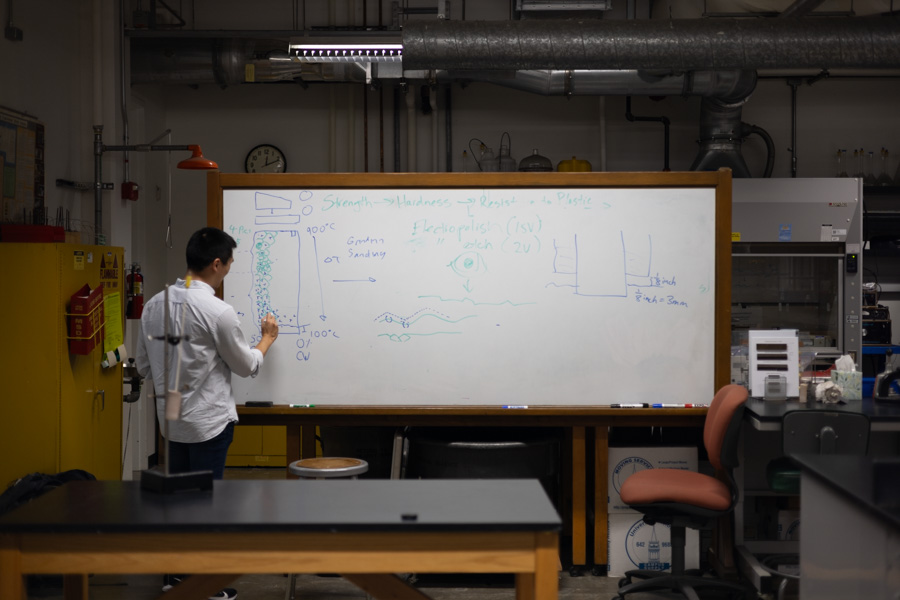
Mastering the transition from student to instructor
The start of the fall semester is always a busy time for graduate students. Those still basking in the respite of summer might be surprised to encounter crowded buses, an influx of scooters and e-bikes, and events perpetually starting 10 minutes late. And while you’re no stranger to overcoming challenges and juggling responsibilities, this year throws another curveball at you—serving as a Graduate Student Instructor, or GSI.
Becoming a GSI can be daunting not only pedagogically, but also logistically. There are multiple administrative parties involved, confused students, and a dizzying array of jargon: percentage, step, responsible employee (“Of course I’m responsible!” you say), etc. Despite having served as a GSI several times in engineering (twice for materials science lab courses at Berkeley and twice for math lecture courses elsewhere), I’m always learning more about the process. Therefore, I share below some reflections and tips for those who are planning to GSI, whether you’re optimizing your chances of securing a position or just looking for a place to start.
Roles and responsibilities
Start by considering what roles and responsibilities you’d like to have. Are you interested in teaching lower division courses with primarily first- and second-year undergraduates from across campus, upper division courses with primarily undergraduates in that major, or graduate courses? At each of the different levels, I found my responsibilities varied, from teaching multiple laboratory sections and grading lab reports in undergraduate courses to holding weekly office hours and responding to a few online discussion posts for graduate students.
I encourage you to reflect on this in the context of the semester and to chat with peers about their experiences. Larger courses mean more interactions with students and opportunities to hone your teaching skills, but also result in more time spent grading! Some instructors may ask you to prepare materials, write new assignments, or even give lectures when they’re out of office. Closely inspect the appointment percentage to understand the workload commensurate with a 50% (20 hrs/wk) or 25% (10 hrs/wk) appointment.

Enze in the Hearst Memorial Mining Building
Get connected
Now that you’ve envisioned your ideal role, it’s time to search for open GSI positions, which can only mean one thing: more emails!
Faculty — An obvious, low-barrier connection is a former instructor of yours—extra points if you did well in their course—as you have a deep understanding of the content and can relate to the students’ challenges. You can also chat with your advisor if they’re teaching a course that you can be a GSI for, and even if they aren’t, they might suggest courses that their former students have been GSIs for. Some other faculty sources include Lecturers in your department who may have a better understanding of the instructional needs and the department’s Faculty Advisor for GSIs (on CalCentral). Finally, as awkward as it may seem, you can also send cold emails to the instructors of courses you’d like to be a GSI for (either before or after applying) to get on their radar and boost your chances of getting accepted.
Staff — For my GSI work, I’ve also built strong connections with our MSE Department Staff, who are immensely helpful and often underutilized resources. They can help you stay informed about possible opportunities and will often forward emails for urgent needs across campus. Note that the bulk of hiring occurs around October for the spring semester and around May for the [following] fall semester, which are the periods when our staff send emails about available GSI positions in MSE. The University has recently created a page listing open GSI positions and different colleges might have their own application page (e.g., CoE). Evidently, this process is decentralized and requires vigilance and patience as opportunities crop up.

Enze in one of the labs in the Hearst Memorial Mining Building
Finding joy in your work
I am always excited to see other graduate students starting this leg of their educational journey, even if they worry about work that interferes with their research—or does it? Regardless of your GSI position, the instructional work that you do will be transformative for yourself and for your students. As you strengthen your communication and leadership skills, you also enhance the learning experience for dozens if not hundreds of students at Berkeley. I regularly hear stories from students who were motivated by their GSIs to finally solve that seemingly unsolvable problem, finish that essay they’ve been dreading, or overcome personal hardships to pass their classes. Stories about students who felt heard. About GSIs who cared.
And now it’s your time to discover the joys of being a GSI! What I’ve found at research-intensive institutions like Berkeley is that if instructional support and information are not communicated, it’s not because they don’t exist, but rather they’re deprioritized in favor of the research mission and other incentives. Sometimes, it just takes a reminder or simple inquiry to get the support you need to succeed. Sometimes, it’s OK to poke the bear.
Enze Chen is a 5th-year PhD Candidate in Materials Science and Engineering and a former GSI Teaching Effectiveness Award recipient at UC Berkeley.
Want More?
- Discover 8 ways to take a break
- Find your new favorite study spot